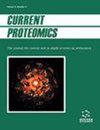In silico Investigation on the Structural Insights into the Binding of Squalamine Inhibitor with Membrane-Bound Α-Synuclein
IF 0.5
4区 生物学
Q4 BIOCHEMICAL RESEARCH METHODS
引用次数: 0
Abstract
Background: Parkinson's disease (PD) and its associated symptoms are closely associated with the self-assembly of α-Synuclein (α-Syn). Squalamine is a naturally occurring chemical substance with established antiviral and anticancer properties, and its profound impact on the α- Syn aggregation both in vivo and in vitro is well studied. Examining its interaction with lipid vesicles, which are known to encourage nucleation, can signify the mechanism of action of squalamine. The squalamine molecule is believed to displace α-Syn from the surfaces of the lipid vesicles, therefore preventing the initial steps in the process of aggregation. Additionally, the squalamine molecule reduces the harmful effects of α-Syn oligomers in human neuroblastoma cells by preventing them from interacting with lipid membranes. Objective: The aim of this study was to perform computational investigation of the conformational changes of membrane-bound α-Syn in the presence of squalamine inhibitor molecule objective: Computational investigation of the conformational changes of membrane-bound α-Synuclein in the presence of squalamine inhibitor molecule Method: Molecular Dynamics (MD) trajectory analysis was carried out to study the structural change of the α-Syn-squalamine conformers as a function of simulation time. The percentage of the secondary structural components of the α-Syn-squalamine complex was determined. Optimization of small molecule inhibitors was carried out using Density Functional Theory (DFT) analysis. Additionally, the values of electrophilicity (ω), nucleophilicity (N), Electron affinity (EA), and ionization potential (IP) were calculated. Results: The docking of the α-Syn-squalamine complex revealed the binding site and the best structure was selected based on the highest docking vina score (-5.8), and the contact residues were listed. From the conformational snapshots of the α-Syn-squalamine complex, it was evident that the α-Syn remained stable, maintaining its integrity throughout the simulation. The α-helical content was found to be retained from the secondary structural content analysis. The ω and N of the squalamine molecule were calculated to be -0.84 and 3.25, respectively. Conclusion: Our findings suggest that in the presence of a squalamine inhibitor molecule, α-Syn adopts a helical conformation that ensures stability and may indicate that the squalamine molecule causes gradual displacement of α-Syn across different regions within the lipid membrane.角鲨胺抑制剂与膜结合型Α-突触核蛋白结合的结构洞察的硅学研究
背景:帕金森病(PD)及其相关症状与α-突触核蛋白(α-Syn)的自组装密切相关。角鲨胺是一种天然化学物质,具有公认的抗病毒和抗癌特性,其对体内和体外α-突触核蛋白聚集的深远影响已得到充分研究。研究它与脂质囊泡的相互作用(众所周知,脂质囊泡会促进成核)可以揭示角鲨胺的作用机制。据信,角鲨胺分子会将α-Syn从脂质囊泡表面置换出来,从而阻止聚集过程的初始步骤。此外,角鲨胺分子还能阻止α-Syn寡聚体与脂质膜相互作用,从而减少α-Syn寡聚体对人类神经母细胞瘤细胞的有害影响。研究目的本研究的目的是对角鲨胺抑制剂分子存在时膜结合的α-Syn的构象变化进行计算研究:计算研究膜结合的α-突触核蛋白在角鲨胺抑制剂分子存在下的构象变化:通过分子动力学(MD)轨迹分析,研究α-Syn-角鲨胺构象的结构变化与模拟时间的函数关系。确定了α-Syn-喹啉胺复合物二级结构成分的百分比。利用密度泛函理论(DFT)分析对小分子抑制剂进行了优化。此外,还计算了亲电性(ω)、亲核性(N)、电子亲和力(EA)和电离电位(IP)的值。结果表明对α-Syn-草酰氨基复合物的对接揭示了其结合位点,并根据最高的对接 vina 得分(-5.8)选出了最佳结构,列出了接触残基。从α-Syn-水杨酸胺复合物的构象快照可以看出,α-Syn保持稳定,在整个模拟过程中都保持其完整性。二级结构成分分析发现,α-螺旋成分得以保留。计算得出角鲨胺分子的ω和N分别为-0.84和3.25。结论我们的研究结果表明,在角鲨胺抑制剂分子存在的情况下,α-Syn会采用螺旋构象以确保其稳定性,这可能表明角鲨胺分子会导致α-Syn在脂膜内的不同区域逐渐移位。
本文章由计算机程序翻译,如有差异,请以英文原文为准。
求助全文
约1分钟内获得全文
求助全文
来源期刊

Current Proteomics
BIOCHEMICAL RESEARCH METHODS-BIOCHEMISTRY & MOLECULAR BIOLOGY
CiteScore
1.60
自引率
0.00%
发文量
25
审稿时长
>0 weeks
期刊介绍:
Research in the emerging field of proteomics is growing at an extremely rapid rate. The principal aim of Current Proteomics is to publish well-timed in-depth/mini review articles in this fast-expanding area on topics relevant and significant to the development of proteomics. Current Proteomics is an essential journal for everyone involved in proteomics and related fields in both academia and industry.
Current Proteomics publishes in-depth/mini review articles in all aspects of the fast-expanding field of proteomics. All areas of proteomics are covered together with the methodology, software, databases, technological advances and applications of proteomics, including functional proteomics. Diverse technologies covered include but are not limited to:
Protein separation and characterization techniques
2-D gel electrophoresis and image analysis
Techniques for protein expression profiling including mass spectrometry-based methods and algorithms for correlative database searching
Determination of co-translational and post- translational modification of proteins
Protein/peptide microarrays
Biomolecular interaction analysis
Analysis of protein complexes
Yeast two-hybrid projects
Protein-protein interaction (protein interactome) pathways and cell signaling networks
Systems biology
Proteome informatics (bioinformatics)
Knowledge integration and management tools
High-throughput protein structural studies (using mass spectrometry, nuclear magnetic resonance and X-ray crystallography)
High-throughput computational methods for protein 3-D structure as well as function determination
Robotics, nanotechnology, and microfluidics.
 求助内容:
求助内容: 应助结果提醒方式:
应助结果提醒方式:


